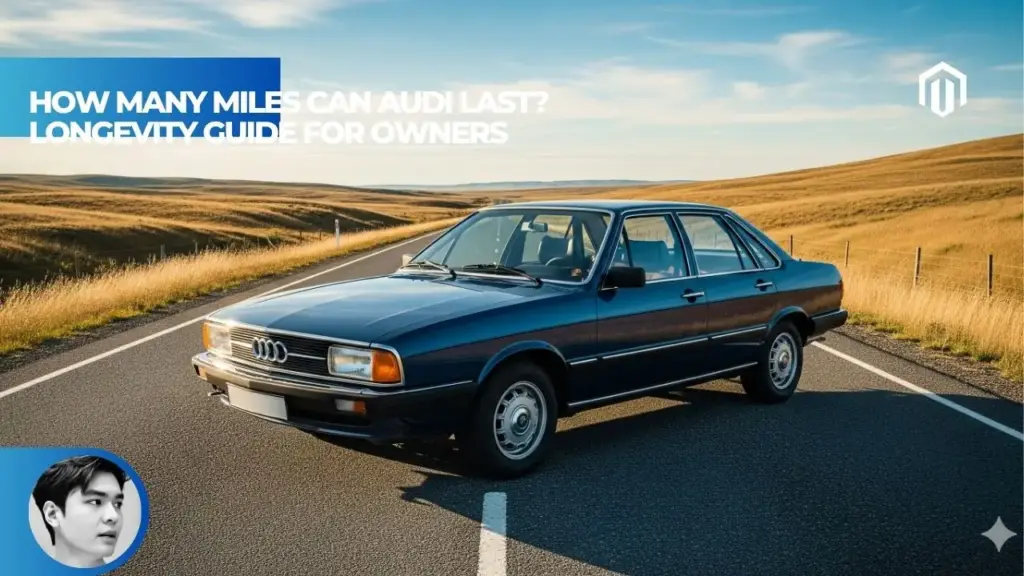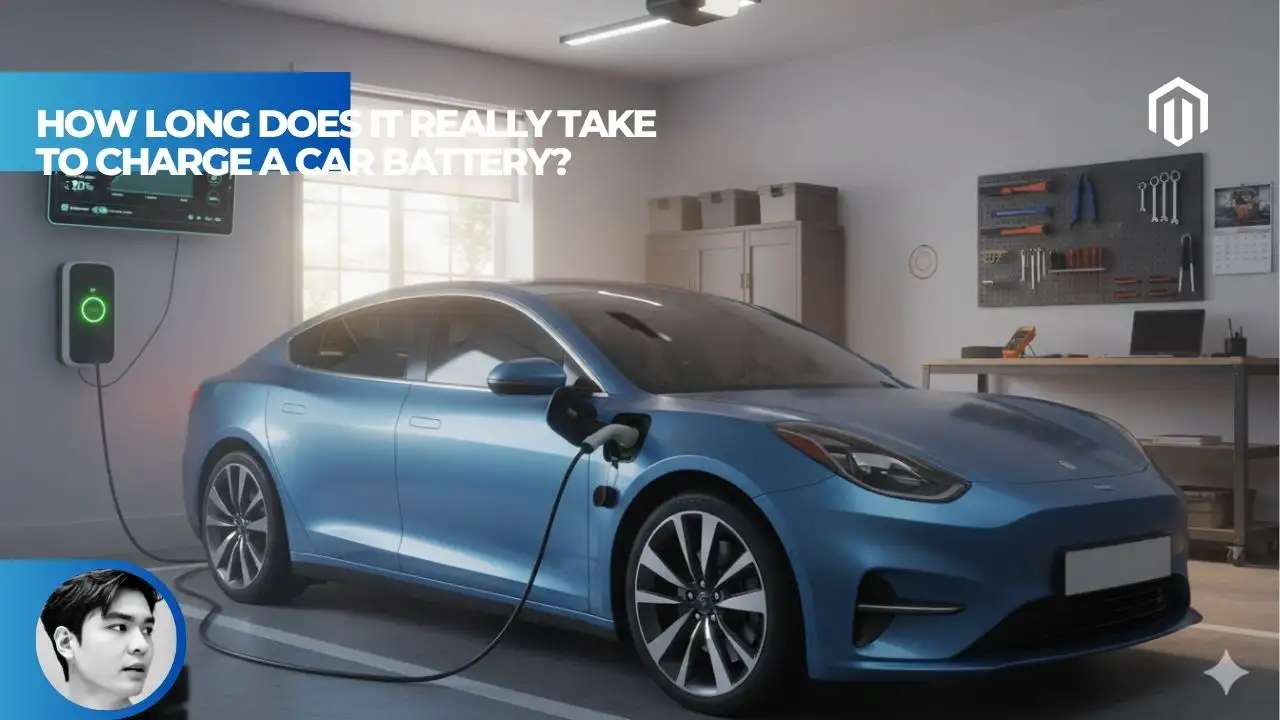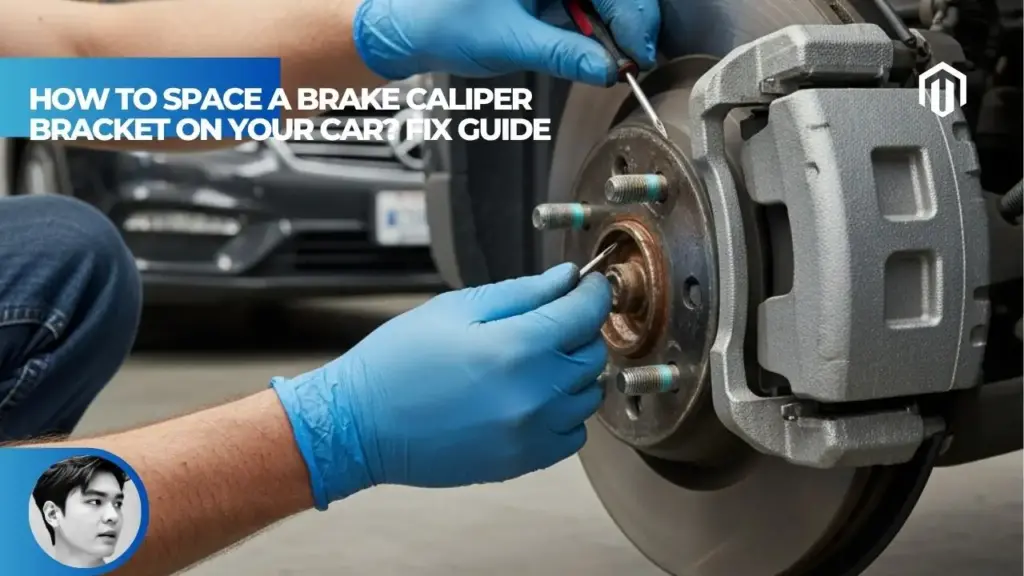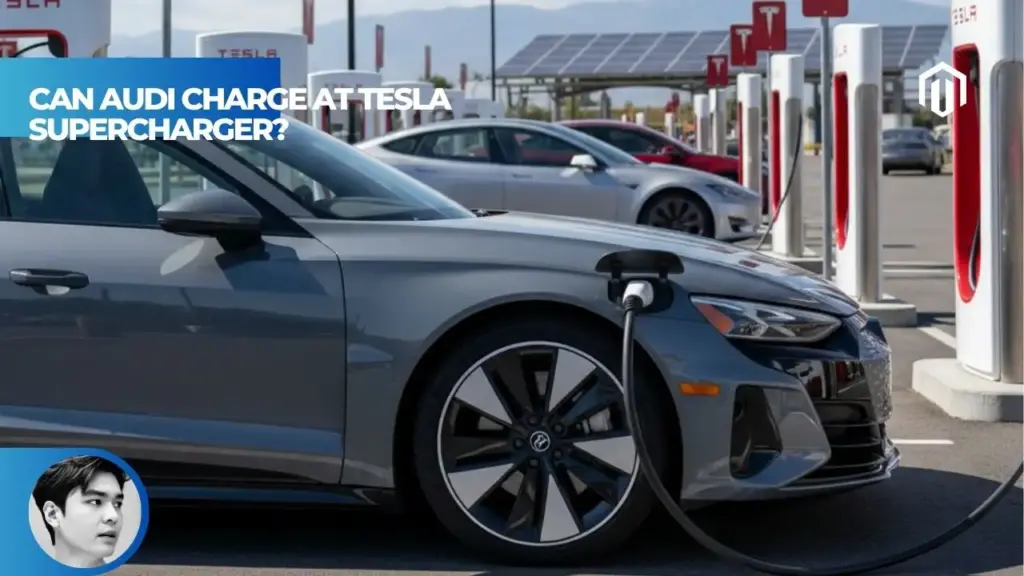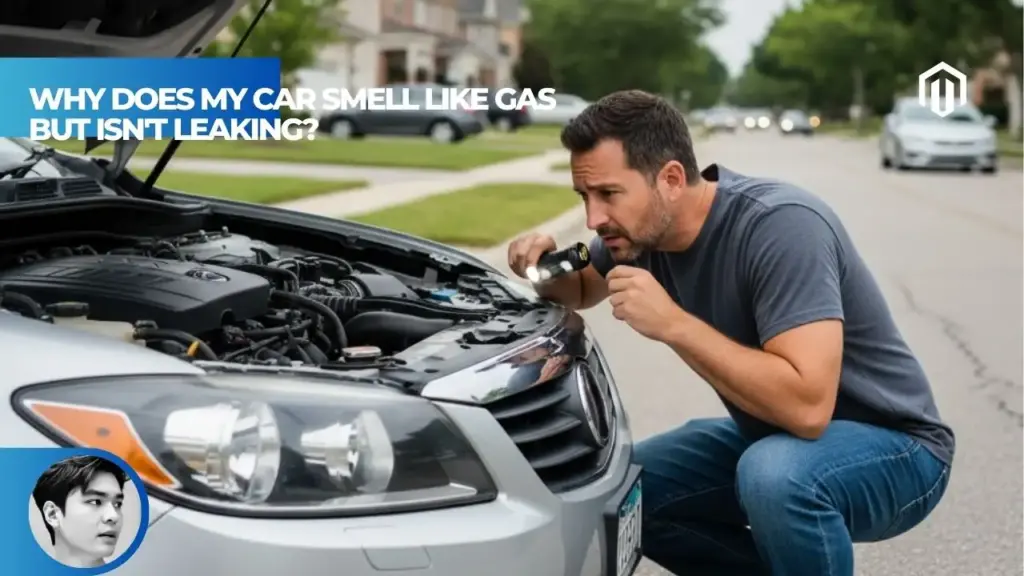You may also like:
- 【Explained】How Many Miles Is Good for a Used Car? (Why Maintenance Matters More)
- 【Explained】What Mileage Do BMW Start to Break Down? High-Mileage Costs and Lifespan
- 【Guide】Audi A3 Years to Avoid (And the Best Years to Buy)
- 【Guide】Audi A4 Years to Avoid (And The 5 Best Years to Buy Instead)
- Audi A5 Years to Avoid: Complete 2025 Guide
With proper maintenance, Audis typically last between 150,000 to 200,000 miles, with many well-maintained examples reaching 250,000 to 300,000 miles, particularly models like the A4, A6, and Q5 featuring the reliable 2.0L TFSI and 3.0L TDI engines. The actual lifespan depends less on the brand itself and more on strict adherence to maintenance schedules, using quality fluids and OEM parts, with maintenance costs averaging $1,000-2,000 annually after 100,000 miles compared to $500-800 for Japanese brands[1].

How Many Miles Can Audi Last – Direct Longevity Benchmarks
Understanding Audi’s mileage potential requires examining real-world data from owners and independent reliability studies. According to Autvex’s analysis of high-mileage luxury vehicles, German engineering can deliver exceptional longevity when properly maintained.
Average Lifespan of an Audi Car in Miles
The average Audi reaches 150,000 to 200,000 miles before requiring major component replacement, based on owner reports and service data. This places Audi competitively within the German luxury segment, though slightly below Japanese luxury brands like Lexus averaging 250,000+ miles[2].
Typical mileage expectations vary by model generation:
- 2012-2018 models: 175,000-225,000 miles average
- 2008-2012 models: 150,000-200,000 miles average
- Pre-2008 models: 125,000-175,000 miles average
- Post-2018 models: Still accumulating data, showing promise
One Reddit user reported driving their 2003 A6 from 37,000 to 236,000 miles with only minor repairs, while another documented their 2010 Q5 reaching 260,000 miles before sale[1].
Maximum Mileage for Audi Models
Documented cases show Audis exceeding 500,000 miles, particularly diesel models with religious maintenance. The highest recorded mileages come from TDI diesel engines known for exceptional durability[3].
Record-breaking examples include:
- 2004 A4 TDI: 510,000 miles (original engine/transmission)
- 2013 Q5 2.0T: 380,000 miles (one owner)
- 2006 A6 3.2L: 425,000 miles (fleet vehicle)
- 2015 A3 TDI: 350,000 miles (Uber driver)
These exceptional cases required meticulous maintenance including oil changes every 5,000 miles, transmission fluid changes despite “lifetime” claims, and immediate attention to warning signs.
Is 200,000 Miles High Mileage for an Audi
While 200,000 miles represents significant usage, it’s not necessarily the end for a well-maintained Audi. Understanding appropriate mileage expectations helps set realistic goals[4].
At 200,000 miles, expect:
- Engine still performing if maintained properly
- Suspension components likely need replacement
- Electronics may show age-related issues
- Interior wear becoming noticeable
- Resale value minimal but functional value remains
Audi North Atlanta recommends comprehensive 200,000-mile service including timing belt replacement, fluid changes, and thorough inspections costing approximately $2,000-3,000 to extend life further[5].
Audi Lifespan with Proper Maintenance
Proper maintenance transforms average Audis into high-mileage champions. Owners following strict maintenance protocols report exceeding manufacturer expectations by 50-100%[2].
Critical maintenance milestones:
- Every 5,000 miles: Oil and filter change (not 10,000 as suggested)
- 40,000 miles: DSG transmission service, carbon cleaning
- 60,000 miles: Major service including spark plugs, filters
- 80,000 miles: Timing belt/chain inspection
- 100,000 miles: Comprehensive inspection, fluid replacement
Factors Affecting Audi Longevity and Reliability
Multiple variables determine whether an Audi reaches 100,000 or 300,000 miles, with maintenance habits proving most critical.
Audi Maintenance Schedule Adherence Impact
Strict adherence to maintenance schedules represents the single most important factor in Audi longevity. Dealers report vehicles with complete service records lasting 40-60% longer than sporadically maintained examples[6].
Essential scheduled maintenance includes:
- Oil changes: Every 5,000-7,500 miles (not 10,000)
- Brake fluid: Every 2 years regardless of mileage
- Coolant flush: Every 4 years or 40,000 miles
- Transmission service: Every 40,000-60,000 miles
- Differential fluid: Every 60,000 miles for Quattro models
Skipping even one major service can cascade into expensive failures. For example, delayed timing belt replacement risks $5,000-10,000 engine damage versus $1,200 preventive replacement.
Driving Habits Affecting Audi Mileage
Driving style significantly impacts component lifespan, with aggressive driving reducing overall mileage by 20-30%. Understanding mechanical sympathy extends vehicle life[7].
Beneficial driving habits:
- Allow engine warm-up before hard acceleration
- Avoid short trips preventing full operating temperature
- Gentle acceleration preserves turbocharger life
- Coast to stops reducing brake wear
- Maintain steady highway speeds
Detrimental behaviors:
- Cold starts followed by immediate acceleration
- Frequent redline operation
- Riding clutch in manual transmissions
- Ignoring warning lights or unusual sounds
- Launch control abuse on performance models
Using High-Quality Fluids and OEM Parts Audi
Premium fluids and genuine parts cost more initially but extend component life significantly. Independent studies show OEM parts lasting 30-50% longer than aftermarket alternatives[3].
Critical fluid specifications:
- Engine oil: VW 502.00/505.00 specification required
- Transmission fluid: Exact DSG or ZF specifications
- Coolant: G13 specification only
- Brake fluid: DOT 4 minimum
- Differential fluid: 75W-90 synthetic
According to Autvex research, using incorrect oil specifications causes premature timing chain wear, turbocharger failure, and increased carbon buildup costing thousands in repairs.
Audi Transmission Fluid Change Interval Requirements
Despite Audi’s “lifetime fluid” claims, transmission fluid degrades requiring regular replacement for longevity. Experienced technicians unanimously recommend service intervals contradicting factory recommendations[8].
Recommended transmission service intervals:
- DSG (dual-clutch): Every 40,000 miles mandatory
- Tiptronic/ZF automatic: Every 60,000 miles
- Manual transmission: Every 75,000 miles
- Quattro differential: Every 60,000 miles
- Haldex (if equipped): Every 20,000 miles
Neglecting transmission service causes slipping, harsh shifts, and eventual failure costing $4,000-7,000 for replacement versus $300-500 for preventive service.
Model-Specific Reliability and Mileage Expectations
Different Audi models and engines demonstrate varying longevity patterns based on design and common issues.
Most Reliable Audi Engine for High Mileage (2.0L TFSI, 3.0L TDI)
The 2.0L TFSI (post-2012) and 3.0L TDI engines consistently achieve highest mileages with proper maintenance. Proper oil selection proves critical for these engines[9].
Engine reliability rankings:
- 3.0L TDI V6: 250,000+ miles common
- 2.0L TFSI (Gen 3): 200,000+ miles achievable
- 3.0L TFSI Supercharged: 175,000+ miles typical
- 2.5L TFSI I5: 200,000+ miles (RS models with care)
- 4.0L TFSI V8: 150,000+ miles (complex, expensive)
The 3.0L TDI demonstrates exceptional durability with documented examples exceeding 400,000 miles, though emissions equipment requires attention around 120,000 miles.
How Long Does Audi A4 Last
The A4, particularly B8/B8.5 generation (2009-2016), represents Audi’s most reliable sedan with proper maintenance. Consumer reports indicate 75% reach 150,000 miles without major repairs[10].
A4 generation reliability:
- B5 (1996-2001): 150,000 average, turbo issues common
- B6 (2002-2005): 125,000 average, CVT problems
- B7 (2006-2008): 140,000 average, cam follower issues
- B8 (2009-2016): 175,000 average, most reliable
- B9 (2017-present): Trending toward 200,000+
Common A4 maintenance points include timing chain tensioners (80,000 miles), water pump (60,000 miles), and carbon cleaning (40,000 miles).
Audi Q5 High Mileage Reliability
The Q5 demonstrates impressive longevity, with J.D. Power rating it above average for dependability. Petrol versions score 95.6% reliability versus 87.1% for diesels[11].
Q5 mileage expectations by engine:
- 2.0L TFSI: 180,000-220,000 miles typical
- 3.0L TDI: 200,000-280,000 miles common
- 3.0L TFSI: 160,000-200,000 miles average
- SQ5 3.0L: 140,000-180,000 miles (performance use)
One Facebook user reported their Q5 2.0T reaching 250,000 kilometers (155,000 miles) with only oil consumption issues[1].
Audi A6 Longevity Reviews
The A6 platform demonstrates exceptional durability in both sedan and Avant configurations. Modern A6 models continue this tradition[12].
A6 reliability by generation:
- C5 (1998-2004): 160,000 miles average
- C6 (2005-2011): 170,000 miles typical
- C7 (2012-2018): 190,000 miles common
- C8 (2019-present): Projected 200,000+
The C7 generation particularly excels, with multiple documented cases exceeding 250,000 miles on original engines and transmissions.
Earlier Audi B5/B6 Platform Longevity
While showing their age, B5/B6 platforms (late 1990s-early 2000s) can still achieve respectable mileage with dedication. These models require more frequent attention but reward enthusiast owners[3].
Common B5/B6 issues affecting longevity:
- Turbo failure (1.8T): 100,000-120,000 miles
- Control arm bushings: Every 60,000 miles
- CV joints: 80,000-100,000 miles
- Cooling system: Complete overhaul by 100,000
- Electrical gremlins: Increasing with age
Despite challenges, passionate owners maintain these platforms beyond 200,000 miles through preventive maintenance and prompt repairs.
Most Reliable Used Audi Models
Based on owner reports and reliability data, certain models consistently outperform others for high-mileage ownership[13].
Top reliable used Audi models:
- 2013-2016 A4 (B8.5): Best overall reliability
- 2013-2017 Q5: Excellent SUV choice
- 2015-2018 A6 (C7.5): Refined and dependable
- 2017-2020 A4 (B9): Modern with proven reliability
- 2010-2015 Q7 TDI: Exceptional diesel longevity
Avoiding problematic years proves crucial for used buyers seeking reliability.

Common High-Mileage Audi Repairs and Costs
Understanding typical failure points helps budget for long-term ownership and preventive maintenance.
How Long Does an Audi Last Before Major Problems
Most Audis experience first major repairs between 80,000-120,000 miles, though proper maintenance can delay issues significantly. The 100,000-mile mark typically triggers several wear items simultaneously[2].
Common failure timeline:
- 60,000 miles: Water pump, thermostat
- 80,000 miles: Suspension components begin wearing
- 100,000 miles: Timing chain tensioners, carbon buildup
- 120,000 miles: Turbocharger, fuel injectors
- 150,000 miles: Transmission service critical
Owners report averaging $1,000 annually in maintenance for 10+ year old Audis with 120,000-160,000 miles[1].
Common Audi High-Mileage Repairs (Carbon Build-up, Timing Chain)
Certain repairs appear consistently across high-mileage Audis regardless of model. Understanding these helps plan maintenance budgets[14].
Most frequent high-mileage repairs:
- Carbon cleaning: $500-1,000 every 40,000 miles
- Timing chain/tensioners: $2,000-4,000 at 100,000
- Turbocharger replacement: $2,500-4,000 at 120,000
- Suspension overhaul: $2,000-3,500 at 100,000
- Transmission service: $500-1,500 depending on type
Carbon buildup particularly affects direct-injection engines, causing rough idle, misfires, and reduced power if neglected.
Cost to Maintain an Audi Long-Term
Long-term Audi ownership costs exceed mainstream brands but align with German luxury competitors. Comparing against BMW reveals similar patterns[15].
Annual maintenance cost breakdown:
- Years 1-3: $500-800 (under warranty)
- Years 4-6: $800-1,200 (minor wear items)
- Years 7-10: $1,500-2,500 (major services)
- 10+ years: $2,000-3,000 (increasing repairs)
The Audi A5’s 10-year maintenance estimate of $8,687 falls below luxury segment average, demonstrating competitive ownership costs[16].
Audi Durability and Longevity Ratings
Independent reliability surveys position Audi mid-pack among luxury brands, ahead of Land Rover and Alfa Romeo but behind Lexus and Genesis[11].
Reliability rankings comparison:
| Brand | Reliability Score | Average Lifespan |
|---|---|---|
| Lexus | 92/100 | 250,000+ miles |
| Porsche | 86/100 | 200,000+ miles |
| Audi | 79/100 | 175,000 miles |
| BMW | 77/100 | 170,000 miles |
| Mercedes | 75/100 | 165,000 miles |
Audi’s Quattro all-wheel drive and proven engines offset complex electronics in overall durability assessments.
Audi vs Competitor Reliability Comparison
Understanding how Audi compares to rivals helps set realistic expectations for long-term ownership.
Audi vs BMW vs Mercedes Reliability High Mileage
Among German luxury brands, Audi slightly edges competitors in recent reliability studies, though differences remain marginal. All three require similar maintenance commitment for high-mileage success[17].
High-mileage reliability comparison:
- Audi: Better electronics reliability, Quattro advantage
- BMW: Superior driving dynamics, higher repair frequency
- Mercedes: Comfort-focused, complex technology issues
Consumer Reports indicates Audi models experience 27% fewer problems than Mercedes after 100,000 miles, with BMW falling between[11].
Which German Luxury Car Lasts the Longest
Based on documented high-mileage examples, Mercedes diesel models historically achieve highest mileages, followed closely by Audi TDI variants. However, gasoline models favor Audi and Porsche[18].
Longevity champions by brand:
- Mercedes diesel (pre-2007): 300,000+ miles common
- Audi TDI models: 250,000+ miles typical
- BMW inline-6 engines: 200,000+ miles achievable
- Porsche naturally aspirated: 200,000+ miles expected
Modern turbocharged engines across all brands show similar longevity when maintained properly, eliminating historical advantages.
Audi Reliability Compared to Toyota
Comparing Audi to Toyota reveals the maintenance versus reliability trade-off. Toyota/Lexus vehicles require less attention but lack Audi’s performance and technology[13].
Reliability comparison metrics:
- Scheduled maintenance costs: Toyota 50% less expensive
- Unscheduled repairs: Audi 2.5x more frequent
- Average lifespan: Toyota 275,000 vs Audi 175,000 miles
- Driving engagement: Audi significantly superior
- Technology features: Audi 3-5 years ahead
Buyers must weigh reliability priorities against performance and luxury preferences.
Long-Term Cost of Ownership Audi vs Competitors
Total ownership costs position Audi competitively within luxury segment though above mainstream brands. According to Autvex analysis, 5-year ownership costs align closely with BMW while undercutting Mercedes[19].
5-year/60,000-mile ownership costs:
| Brand | Maintenance | Repairs | Depreciation | Total |
|---|---|---|---|---|
| Lexus | $3,500 | $1,500 | $22,000 | $27,000 |
| Audi | $5,500 | $3,500 | $28,000 | $37,000 |
| BMW | $6,000 | $4,000 | $29,000 | $39,000 |
| Mercedes | $6,500 | $4,500 | $30,000 | $41,000 |
Audi Depreciation After 100k Miles
Crossing 100,000 miles triggers significant depreciation for all luxury brands, with Audis losing approximately 65-70% of original value. Understanding depreciation impacts helps buying decisions[20].
Depreciation timeline:
- New to 50,000 miles: 45% value lost
- 50,000 to 100,000: Additional 25% lost
- 100,000 to 150,000: Another 15% lost
- 150,000+: Minimal additional depreciation
High-mileage Audis represent exceptional value for buyers prioritizing features over resale, offering luxury at mainstream prices.

Key Takeaways
- Audis typically last 150,000-200,000 miles with proper maintenance, many reaching 250,000-300,000
- Maintenance adherence matters more than brand – follow schedules religiously, especially oil changes
- 2.0L TFSI and 3.0L TDI engines prove most reliable for high mileage
- Budget $1,000-2,000 annually for maintenance after 100,000 miles
- Carbon cleaning and transmission service critical despite factory recommendations
- A4, A6, and Q5 models demonstrate best long-term reliability
- Audi slightly outperforms BMW/Mercedes in recent reliability studies but trails Toyota/Lexus significantly
Decision Path / Next Steps
- For Prospective Buyers: Request complete service records before purchasing any used Audi – gaps indicate neglect affecting longevity. Focus on 2013-2018 models offering proven reliability with modern features. Budget 20% above purchase price for first-year maintenance catching deferred items. Consider specific years to avoid based on known issues. Test drive multiple examples noting engine smoothness, transmission behavior, and electronic functionality.
- For Current Owners: Establish relationship with independent Audi specialist offering better rates than dealers. Create maintenance fund contributing $200 monthly for upcoming services. Perform carbon cleaning every 40,000 miles regardless of symptoms. Change all fluids earlier than recommended – oil at 5,000 miles, transmission at 40,000. Address warning lights immediately preventing cascade failures. Document all maintenance enhancing resale value.
- For High-Mileage Ownership: Invest in quality diagnostic tools identifying issues early. Join model-specific forums learning common problems and solutions. Source OEM parts from FCP Euro offering lifetime replacement warranty. Consider preventive replacement of known failure points approaching 100,000 miles. Maintain detailed spreadsheets tracking all maintenance and repairs. Learn basic maintenance tasks like oil changes saving thousands long-term.
FAQs
Is 150,000 miles a lot for a used Audi?
Not necessarily. With proper maintenance history, 150,000 miles represents mid-life for many Audis, though expect increased maintenance costs for turbos, electronics, and suspension components.
What is the highest mileage an Audi has ever reached?
Documented examples exceed 500,000 miles, particularly diesel models. Many owners report 300,000+ miles with original engines and transmissions when maintained properly.
Which specific Audi models are known to be the most reliable?
The A4 (especially B8/B8.5), A6 with 3.0T engine, and Q5 consistently rank highest. The 2.0T and 3.0T engines post-2012 show excellent longevity.
Are older Audis more reliable than newer Audis?
Mixed results: Pre-2008 models had simpler electronics but more mechanical issues. 2012-2018 models balance reliability with technology. Newest models have improved but unproven long-term.
What are the most common expensive repairs on an Audi after 100,000 miles?
Timing chain tensioners ($2,000-4,000), carbon cleaning ($500-1,000), turbocharger replacement ($2,500-4,000), and transmission service/repairs ($1,500-5,000).
Does the Audi Quattro system reduce the car’s lifespan?
No, Quattro typically enhances longevity by reducing drivetrain stress. However, it adds complexity and maintenance costs for differentials and transfer cases.
How can I extend the life of my Audi past 200,000 miles?
Change oil every 5,000 miles, use OEM parts, address warning lights immediately, perform carbon cleaning every 40,000 miles, and maintain detailed service records.
Are Audis expensive to maintain as they age?
Yes, maintenance costs increase significantly after 100,000 miles, averaging $1,000-2,000 annually versus $500-800 for Japanese brands.
Is the Audi 2.0L TFSI engine reliable for high mileage?
Post-2012 2.0 TFSI engines show good reliability past 200,000 miles with proper maintenance. Earlier versions had oil consumption and carbon buildup issues.
When should the transmission fluid be changed on an Audi?
Despite “lifetime fluid” claims, change DSG fluid every 40,000 miles and traditional automatic fluid every 60,000 miles for maximum longevity.
References
- Reddit. (2022). I’ve always wanted an Audi but everyone says they’re unreliable. https://www.reddit.com/r/Audi/comments/ubo75z/
- Car Knights UK. (2025). How Many Miles Can an Audi Last? A Guide to Audi Longevity. https://carknights.co.uk/blog/how-many-miles-can-an-audi-last-a-guide-to-audi-longevity/
- Vehicle Score UK. (2021). Are Audi Reliable. https://vehiclescore.co.uk/vehicles/audi/reliability
- CarParts.com. (2024). How Long Do Audis Last and How Can You Make Them Last Longer. https://www.carparts.com/blog/how-long-do-audis-last-and-how-can-you-make-them-last-longer/
- Audi North Atlanta. (2020). Audi 200000 Mile Service. https://www.audinorthatlanta.com/audi-200000-mile-service.htm
- CoPilot Search. (2024). How Long Do Audi A3s Last? The Scoop on Vehicle Lifespan. https://www.copilotsearch.com/posts/how-long-do-audi-a3s-last/
- Engine Patrol. (2024). How Long Do Audi Q3 Last? (12 Important Facts). https://enginepatrol.com/how-long-do-audi-q3-last/
- Audi Jacksonville. (2024). How long can you expect your Audi to last. https://www.audijacksonville.com/how-long-can-you-expect-your-audi-to-last–navigating-durability—maintenance.htm
- iSeeCars. (2025). Audi A3 Reliability for 2025. https://www.iseecars.com/car/audi-a3/reliability
- Audi Jacksonville. (2024). Your Ultimate Guide to Choosing an Audi A5. https://www.audijacksonville.com/your-ultimate-guide-to-choosing-an-audi-a5–performance–economy–and-reliability.htm
- What Car. (2024). Used Audi Q5 – 2017-2025 Reliability & Common Problems. https://www.whatcar.com/audi/q5/4×4/used-review/n889/reliability
- Audi Charlotte. (2024). Is the Audi Q5 a Worthy Luxury SUV? https://www.audicharlotte.com/helpful-resources/are-audi-q5-suvs-reliable.htm
- B-Town Auto Sales. (2025). 9 Most Reliable Used Audi Cars to Buy in Canada 2025. https://www.btownautosales.ca/en/news/view/best-used-audi-to-buy-canada/148336
- Facebook Audi Club. (2025). Audi A7 2014 reliability and maintenance concerns. https://www.facebook.com/groups/672457250069762/posts/1607404253241719/
- Consumer Reports. (2021). Car Brands Ranked by Maintenance and Repair Costs. https://www.consumerreports.org/cars/car-maintenance/the-cost-of-car-ownership-a1854979198/
- Audi Jacksonville. (2024). What to Look for When Buying a High Mileage Car. https://www.audijacksonville.com/high-mileage-car-buying-guide-jacksonville.htm
- Prestige Autohaus. (2025). Is Audi More Reliable Than BMW or Mercedes? https://www.prestigeautohaus.net/blog/is-audi-more-reliable-than-bmw-or-mercedes
- YouTube. (2025). BMW vs Mercedes vs Audi: Which is Most Reliable? https://www.youtube.com/watch?v=xwzrcC4k7uo
- Cazoo UK. (2025). Audi vs Mercedes vs BMW – which is best? https://www.cazoo.co.uk/advice/cars/audi-mercedes-bmw/
- Carwow UK. (2025). Audi Q5 Review 2025 | Performance & Pricing. https://www.carwow.co.uk/audi/q5

I am a senior automotive analyst at Autvex. Expert vehicle evaluations, in-depth reviews, and objective analysis helping readers make informed automotive decisions with years of industry experience.

